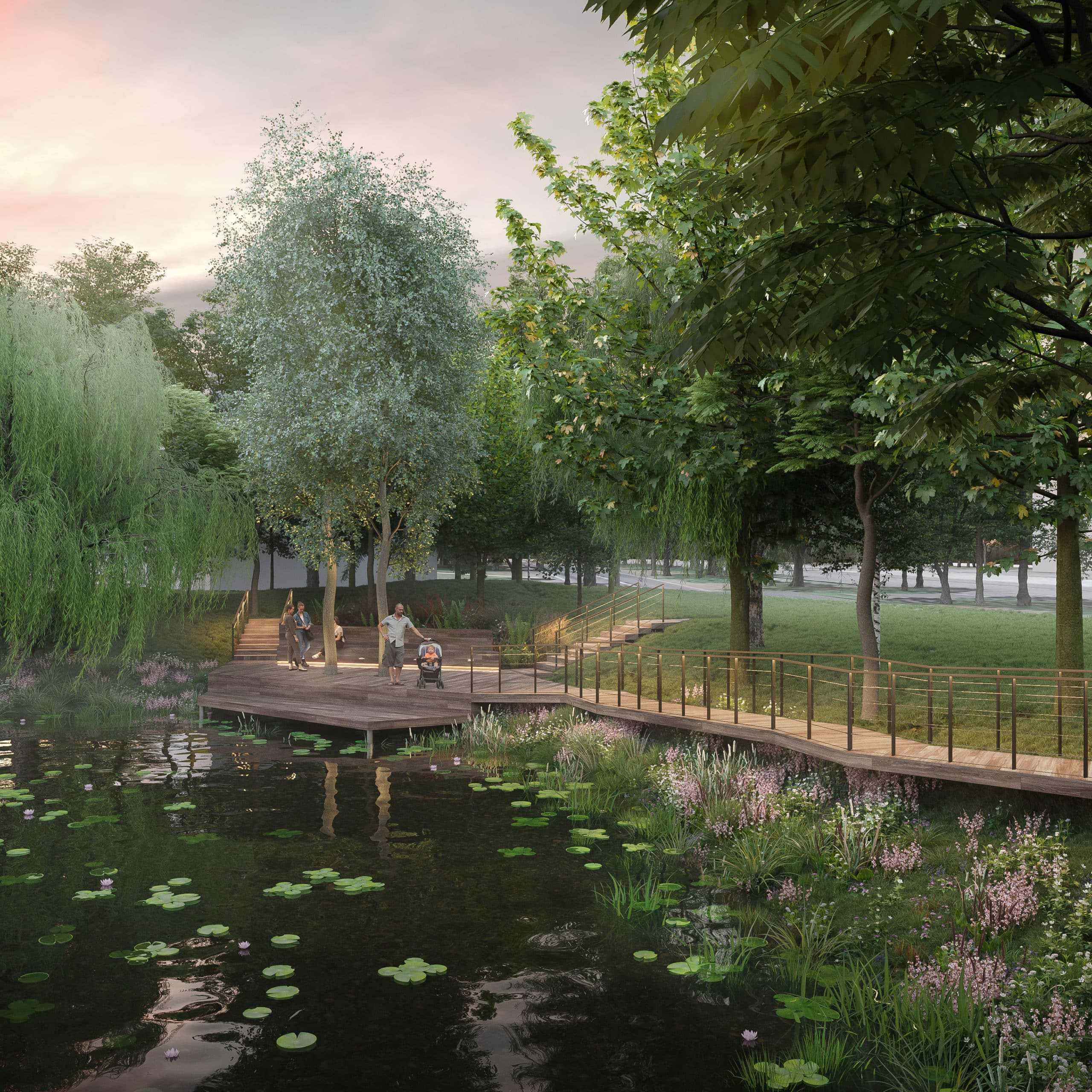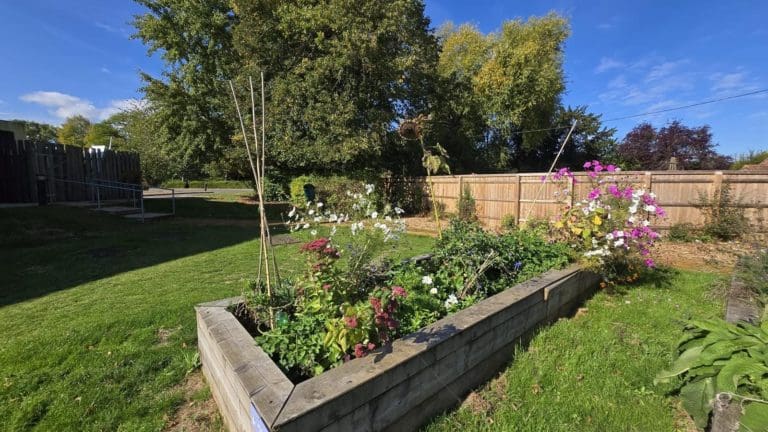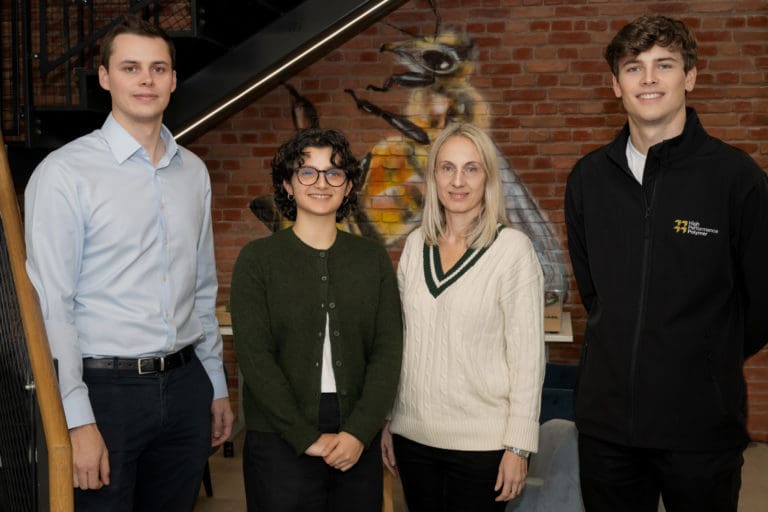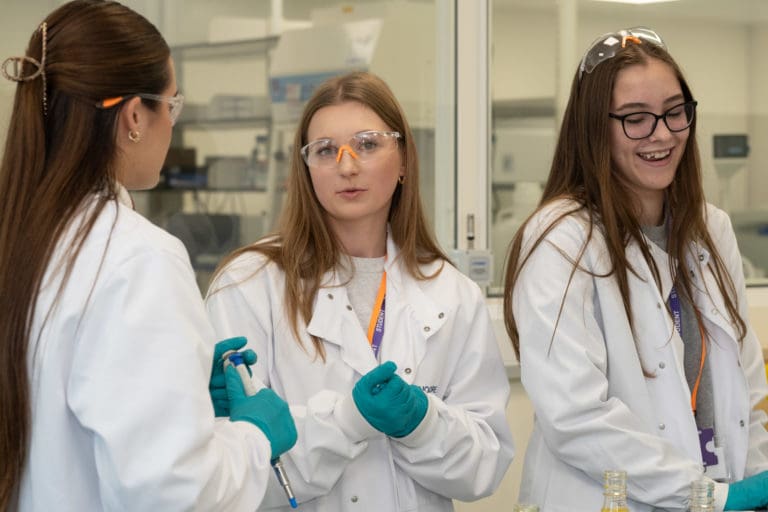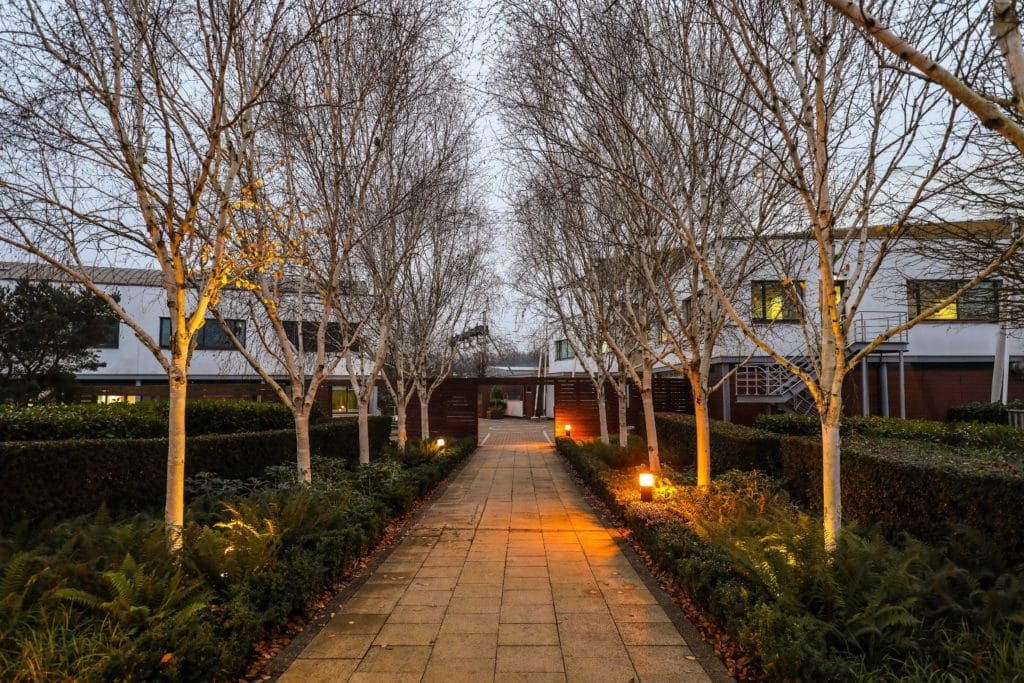
As outlined in a recent article, ASA Landscape Architects gave an exciting overview of the landscaping elements as part of the Signal Yard redevelopment, a key component in creating a more inclusive and environmentally-friendly amenity space here at Milton Park.
Once complete, Signal Yard will feature improved landscaping and more pedestrian-friendly areas, with inviting spaces for people, plants and animals alike.
As with any project of this nature, decisions have to be made regarding existing vegetation that are either non-native or suffering from diseases, especially trees, which can pose risks to health and safety. In line with an independent Arboricultural Impact Assessment, it has been identified that the removal of some trees is necessary to support the long-term sustainability and safety of the area.
Rest assured, all tree removals will take place outside of bird nesting season and we will replace all the trees lost, using native and climate-resilient species which provide greater ecological benefits. Although these works are necessary, we want to provide you with a short update on the reasons behind the decision to remove certain species.
Addressing health and safety concerns
Among the trees that need to be removed are several Raywood Ash trees along Park Drive, which have unfortunately shown extensive signs of decline due to Ash dieback; a disease affecting the species across the UK. The majority of these trees have been classified as ‘Category U,’ which indicates they are either dead, dying, or pose a safety risk. While we value these trees for their visual appeal and the enjoyment they bring, we must above all prioritise the safety of everyone who uses this new space. We will replace these trees with more resilient, native species.
Transitioning to native and more climate-resilient species
Some Himalayan Birch trees near the traffic lights will also be removed as part of the landscaping. These are non-native to the UK and do not provide the same benefits to local ecosystems as native species. Removing these birches will open views towards the new arrival space, creating a more welcoming entrance and enhancing the overall landscape design.
In place of these trees, we will plant native and more climate-resilient species that align with the biodiversity goals of Signal Yard. These replacements will not only support local wildlife but will also enhance the resilience of the landscape to future environmental changes.
Honouring the legacy of the trees through recycling and reuse
We are exploring options for reusing and recycling as much wood from the trees which require removal. As a result, we are liaising with Raw Workshop, a local charity specialising in environmentally conscious projects, to repurpose the wood and create furniture. This will allow the wood to continue enriching the community in a new form, giving them a meaningful new role within Signal Yard.
Looking forward to a greener future
We understand that the removal of any trees, particularly ones which we see on a daily basis, can be a sensitive matter. We want to reassure you that these decisions were made carefully with extensive input from experts and every effort has been made to balance the needs of our community and our environment against safety.
If you have any questions surrounding the landscaping at Signal Yard, please email: marketing@miltonpark.com

